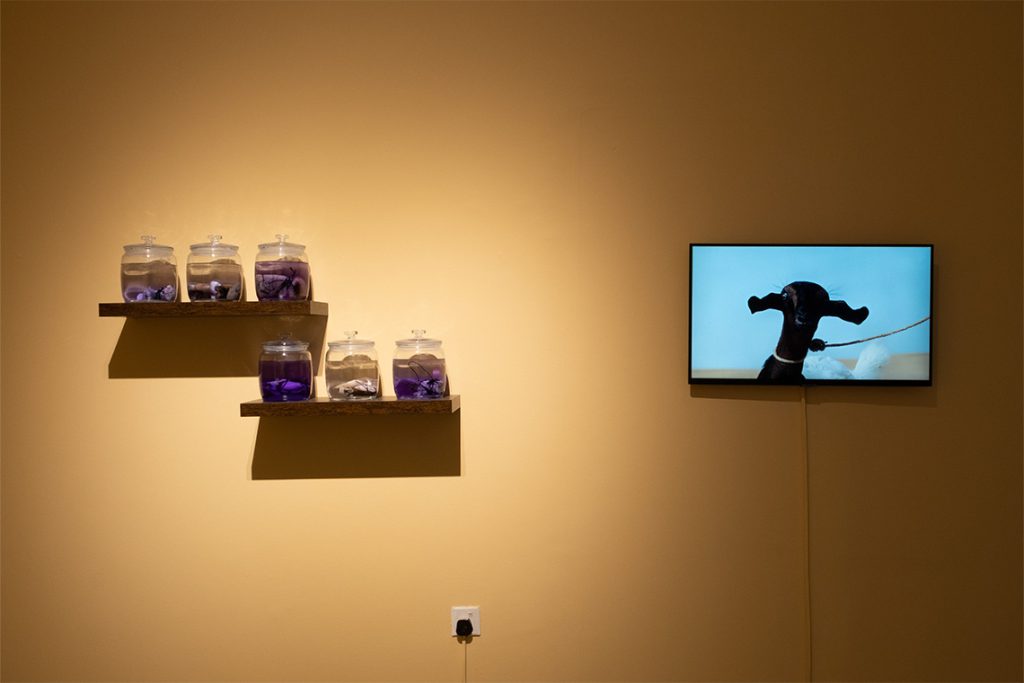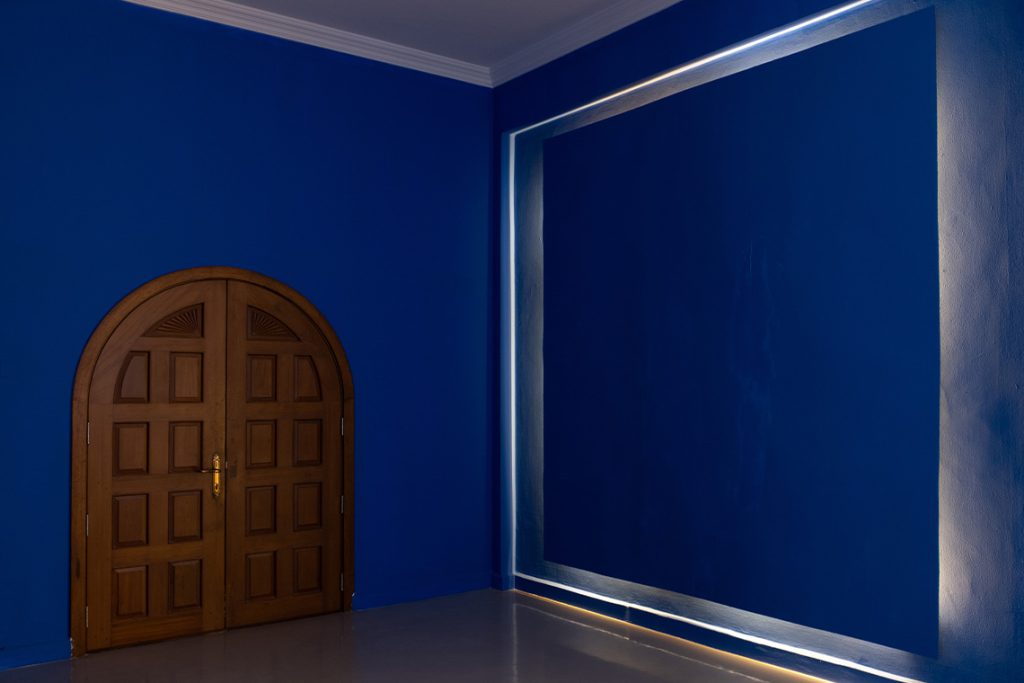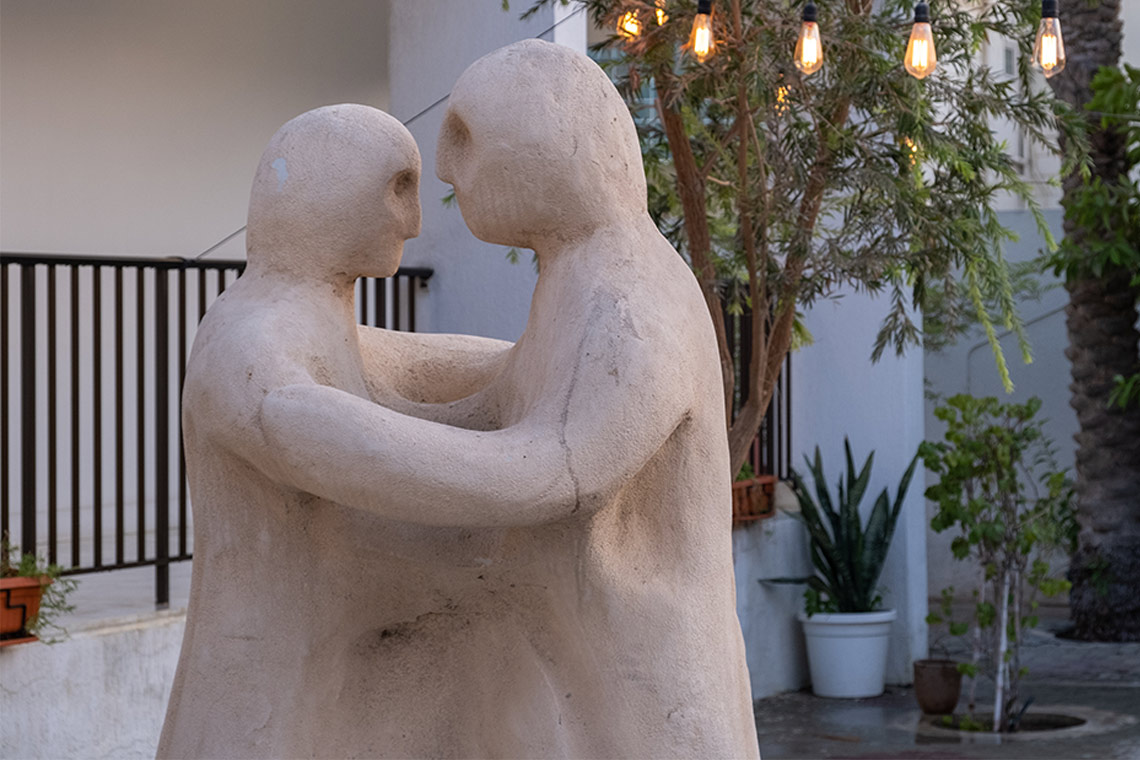Years after the Rashid School for Boys closed its doors, its memory lives on through alumni reflections on loss, identity and belonging.
It was a weekday afternoon, with a kind of calm settling quietly over Bayt Al Mamzar as I arrived. At the entrance of the villa, I was greeted by two figures in a quiet embrace, their forms blurred and inseparable. Gaith Abdulla’s Untitled (2006), carved in polystyrene, holds the space with understated tenderness. The gesture between the two figures is neither dramatic nor monumental, yet intimate, steady and still. For Abdulla, a 2007 alumnus of the Rashid School for Boys, the sculpture reflects a longing for closeness within a world that often teaches distance.
This quiet moment sets the tone for what unfolds inside. Curated by Jumairy, himself a former student of the school, the exhibition gathers works by alumni who return years later to a shared past that shaped them in ways both subtle and enduring. It is not a nostalgic reconstruction, but rather an act of re-encounter, a way of revisiting the unspoken language of boyhood, where emotion was managed, contained or silenced. Stepping inside, visitors are immediately met by Mohammed Singel’s Three Identities, One Canvas, Still Me (2012). Painted during his ASL levels, the oil work depicts three male figures, each a version of Singel himself, seen from behind and looking toward the unknown. Singel names these figures The Wanderer, The Emirati and The Athlete, a meditation on the multiplicity of self, the roles we inhabit and the futures we imagine.

Moving along, a mustard yellow corner catches the eye, leading it to the purple-hued wet animal specimens carefully arranged on a shelf as if in a laboratory – silent and suspended. Adjacent, a video screen plays the delicate process of how these specimens are transformed from breathing entities into sockets looking through the jars. In Hiss: A Handicraft (2025) by Maktoum Al Maktoum, the intensity continues to build. It is not just a material , it is memory stitched to matter. The work draws from an ancient mnemonic practice using remnants of recently slaughtered animals, threaded over seven cycles. Although some might see only the visceral, there is a strange serenity here. Bathed in the same yellow hue as the walls, Ziad Al Najjar’s works breathe with restless energy. The tattooed latex sheets stretched like skin under tension bear the imprints of bodies caught in struggle and entanglement. This series captures how memory and identity are inscribed not only on skin but also deep within.

In the centre of the exhibition space, the mood deepens. Painted in deep blue, a colour long coded as masculine and noticeably darker than the rest of the exhibition, Home, Out & About, In Character a 3-channel video installation draws the viewer in. Sourced from personal archives of RSB alumni, the footages are organised into three sequences. Only one screen plays at a time, but sometimes they overlap to blur memories and moments. Nearby, a naked wall stands as a silent witness to a lost painting. It commemorates Framed: A Memory in Waiting (2025), honouring the vanished painting of Ahmed AlMulla. The original 3 x 3 metre spiral acrylic, inspired by Jackson Pollock and created during his final years at RSB, once embodied the raw emotional energy of adolescence. By outlining the dimensions of the missing canvas, the installation forces viewers to confront what is no longer there, turning the absence into a contemplative space where loss, memory and identity intersect.
Memories ripple through the exhibition like whispered echoes, folding time between what was and what remains unseen. The works do not tidy up the past or hand us neat answers, instead holding a space for contradictions, the silences and the small victories that carry on long after the final bell has rung.



